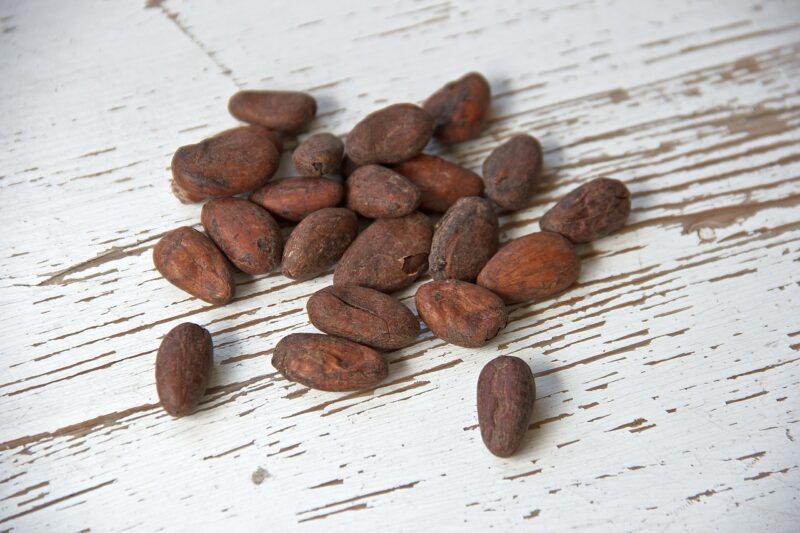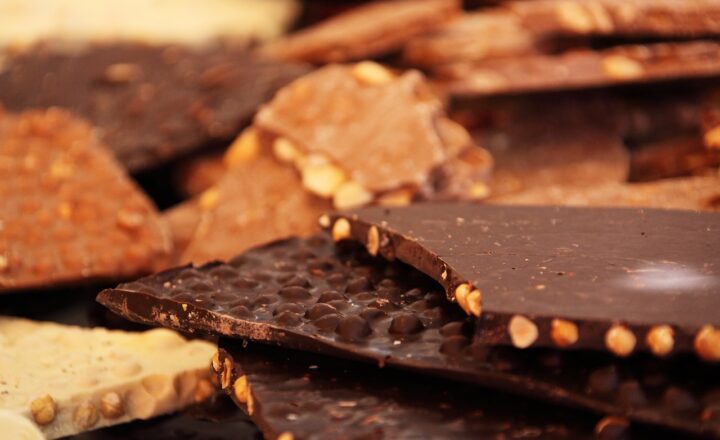
Chocolate is a beloved treat enjoyed by many and comes in various forms, but do you know how dark, milk, and white chocolate are made from cocoa beans? In this comprehensive guide, we’ll explore the journey of cocoa beans from the tree to your favorite chocolate bar, discussing the processes that distinguish dark, milk, and white chocolate.
1. The Cocoa Bean: A Brief Introduction
The story of chocolate begins in the tropical regions of Central and South America where the cacao tree (Theobroma cacao) grows. Beneath the bright green canopy, these trees produce pods that house cocoa beans. Inside a single pod, you may find 20-50 cocoa beans surrounded by a sweet, white pulp known as mucilage.
Cocoa beans are the primary ingredient used to create all types of chocolate. However, the processing of these beans varies significantly to produce dark, milk, and white chocolate. Understanding these processes will take us closer to appreciating the unique flavors and textures of each type.
2. Harvesting and Fermenting Cocoa Beans
After about five years of growth, cocoa trees produce ripe pods that are ready to be harvested. The harvesting process involves:
- Carefully cutting the pods from the tree without damaging the tree or nearby pods.
- Opening the pods to extract the beans and the surrounding white pulp.
- Placing the extracted beans into shallow containers or wrapping them in banana leaves for fermentation, which typically lasts about 5 to 7 days.
Fermentation is a critical step as it affects the flavor profile of the chocolate. During this process, the sugars from the pulp are converted into alcohol, which then ferments into acids, developing the beans’ stellar flavors. After fermentation, the beans are dried in the sun, reducing moisture content that makes them stable for storage and transportation.
3. Roasting Cocoa Beans
Once dried, the next stage is roasting. The beans are roasted at different temperatures and durations to enhance their flavor, much like coffee beans. The infrared energy causes chemical reactions, including the Maillard reaction, which deepens the color and aroma of the cocoa beans.
The roasting process can vary significantly:
- Dark chocolate beans often undergo longer roasting, leading to a robust, intense flavor.
- Milk chocolate beans may be roasted at lower temperatures to maintain some mildness in flavor.
- White chocolate does not involve cocoa roasting, as it does not contain cocoa solids.
Once roasted, the outer shells of the beans are cracked, and the inner nibs are collected. These nibs are the heart of chocolate and contain 50-60% cocoa butter and 30-40% cocoa solids.
4. Producing Dark Chocolate
Dark chocolate is the purest form of chocolate and contains a high percentage of cocoa solids and cocoa butter, with little to no dairy. The basic process for making dark chocolate includes:
- Grinding the cocoa nibs into a thick paste called chocolate liquor (not alcoholic). This process releases cocoa butter, forming a thick, smooth paste.
- Conching, where the chocolate liquor is mixed and aerated to develop a smooth texture and rich flavor. This process can take up to several hours.
- Tempering the chocolate, cooling it to specific temperatures to stabilize the cocoa butter crystals, ensuring it has a glossy finish and a nice snap when broken.
- Molding and cooling the tempered chocolate in bars or other shapes.
The result is a rich, intense flavor with no dairy, favored by chocolate lovers who enjoy a more bitter chocolate experience.
5. Producing Milk Chocolate
Unlike dark chocolate, milk chocolate is blended with dairy, giving it a creamy texture. Here’s how it’s made:
- Similar to dark chocolate, the cocoa nibs are ground to form chocolate liquor.
- Milk powder or condensed milk is then added to the chocolate liquor.
- Sugar is added to sweeten and balance the flavors, along with some cocoa butter for smoothness.
- The mixture is conched and tempered, similar to dark chocolate, to achieve the desired smoothness and texture.
The final product is a sweet, creamy chocolate that is favored for its milder flavor profile and luxurious mouthfeel.
6. Producing White Chocolate
Interestingly, white chocolate lacks cocoa solids since it is made from cocoa butter, sugar, and milk. This distinction leads to debates on whether it can be considered “real” chocolate. The process of making white chocolate is:
- Skipping the grinding of nibs means there are no cocoa solids included in the process.
- Cocoa butter is extracted from cocoa beans separately.
- Cocoa butter is mixed with sugar and milk to create a creamy, sweet mixture.
- The mixture is carefully tempered to create a smooth consistency, making it suitable for molding.
The outcome is a sweet, creamy confection that lacks the bitter notes of dark and milk chocolate, making it a versatile ingredient in various desserts and confections.
Conclusion: Three Varieties, One Delight
In conclusion, dark, milk, and white chocolate each have their unique preparation methods and taste profiles. While dark chocolate is celebrated for its rich, intense flavor, milk chocolate offers a creamier sweetness, and white chocolate presents a delightful alternative for those who prefer less bitterness. Understanding the differences in production allows chocolate lovers to appreciate the complexities and intricacies involved in creating these beloved treats. The next time you indulge in chocolate, remember the journey of the cocoa bean and the artistry behind each type of chocolate.
Whether it’s dark, milk, or white, chocolate continues to bring joy to people around the world, making it a truly universal treat that connects cultures and generations. Enjoy your next chocolate experience knowing just how much goes into making it!





